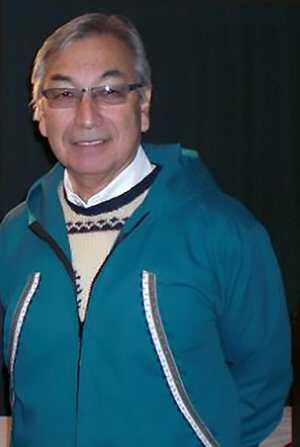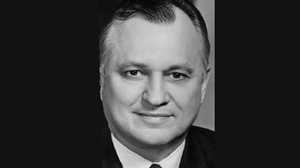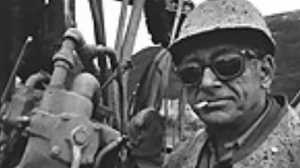The Impact of the Pipeline on Alaska Natives
"I was in that generation that was still hunting and fishing and living in sod tents and using dogs for locomotion. There was very little cash then and we had to really struggle. I remember having a lot of rotten teeth right down to the gums and nobody to take care of them. We really worked hard. It was an okay life; it was just a hard life. We just didn't have any safety nets.— Willie Hensley, former president, Alaska Federation of Natives.

From Alaska to D.C.
Willie Hensley grew up in Kotzebue, a small community in northwest Alaska, 33 miles north of the Arctic Circle. In the early 1960s, he went to the nation's capital to study political science at George Washington University.
Willie Hensley: "I used to always wonder why all the Indian tribes were coming to Washington, D.C., asking for this, that and another, and there was hardly anybody coming from Alaska."
Defining Native Rights
In 1966 Hensley wrote a paper entitled "What Rights to Land Have the Alaska Natives: The Primary Issue," for a graduate class in constitutional law at the University of Fairbanks.
Willie Hensley: "I think that paper, for the first time, gave not only me, but many other people, a sort of a historical, legal and policy view of what Alaska Native rights were."
Settling Claims
That same year, Hensley and several other Native leaders formed the Alaska Federation of Natives (AFN) -- an organization that would be instrumental in settling Native land claims with the state and federal governments. Under the Alaska Native Claims Settlement Act, signed into law in 1971, Alaska Natives received 44 million acres of land and $962 million. Hensley and the AFN, however, pushed for more.
Opportunities for Natives
Willie Hensley: "It wasn't as if we had to support the pipeline. But, at the same time, it was an opportunity to nail something more down and even though our bargaining position wasn't that phenomenal, I did the best I could. That's how we got the provision in the grant of right of way from the Department of Interior that required training and employment of Alaska natives."
Native Land Ownership
Under the act, Congress also created 12 regional corporations, with a thirteenth based in Seattle, Washington, and more than 200 village corporations to manage the land and money. The land was divided up along regional and ethnic lines. These corporations were created as private entities. The capital and decision-making were put in the hands of Alaska Natives without state or federal government oversight. Every Native received 100 shares in the corporation.
Willie Hensley: "Some are billion-dollar corporations that are doing business constantly in all aspects of Alaska business life. Some of them are very huge in the oil field services arena that covers the whole spectrum: mining, construction, hotels, tourism, telecommunications and engineering. In many ways, when you think about it, we would never have been a part of the economy the way we are without the land claim settlement." The land claim settlement and the pipeline are in fact intertwined.
In the Modern World
Some corporations have fared better than others. But even with land, money and political power, overnight propulsion into the modern world has had its consequences.
Willie Hensley: "Just like any other place, we have problems of alcohol and drugs. We have a lot of diabetes in our communities. ... We've become in a lot of ways like other Americans. ... The thing that worries me in the long run: You can't look at the settlement in strictly economic terms. We were trying, in effect, to save our people and that meant the language, the culture and the values. And so that, for me, is the big challenge of the future, because if we lose that, we will ultimately lose the land and maybe perhaps the control of the corporations."
Working for Alyeska
Willie Hensley is currently the manager of federal government relations in Washington, D.C., for the Alyeska Pipeline Service Company, the organization that operates and maintains the 800-mile Trans-Alaska Pipeline System. He joined the company in 1997 to act as liaison between Alyeska and the Native community.






